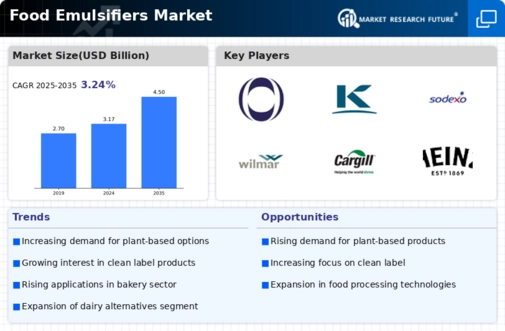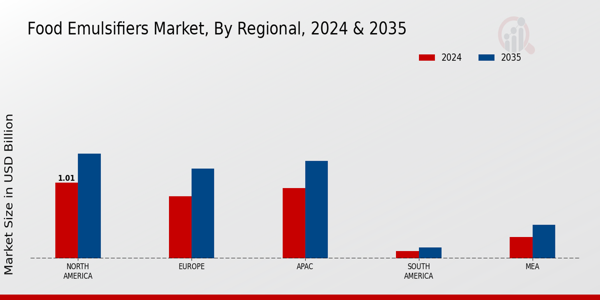Market Share
Food Emulsifiers Market Share Analysis
In the competitive landscape of the Food Emulsifiers Market, companies employ various market share positioning strategies to establish a strong foothold and differentiate themselves. One common strategy is product differentiation, where companies focus on developing unique and innovative emulsifiers that offer specific functional benefits. By creating emulsifiers with improved stability, texture, and compatibility with diverse food applications, companies can set themselves apart and attract a customer base seeking specialized solutions. This strategy allows them to command a premium price and build brand loyalty based on the perceived added value of their products.
Additionally, market players often engage in strategic partnerships and collaborations to enhance their market share. Forming alliances with food manufacturers, research institutions, or suppliers enables companies to leverage complementary strengths and resources. Collaborative efforts can lead to the development of cutting-edge emulsifiers, expanded distribution networks, and shared market intelligence. These partnerships not only strengthen the position of individual companies but also contribute to the overall growth of the Food Emulsifiers Market.
Furthermore, companies strategically focus on addressing the growing demand for clean-label and natural products. Developing emulsifiers derived from natural sources aligns with consumer preferences for transparency and simplicity in ingredient lists. Brands that position themselves as providers of clean-label emulsifiers can tap into the increasing market segment seeking natural and minimally processed alternatives. This strategy not only caters to consumer preferences but also helps companies stay ahead in a market where health-conscious choices are gaining prominence.
Market players also employ pricing strategies to influence their market share. Some companies opt for cost leadership, aiming to offer emulsifiers at competitive prices while maintaining quality. This strategy can attract price-sensitive consumers and secure a larger market share through increased volume sales. On the other hand, premium pricing strategies may be adopted by companies emphasizing the superior quality, functionality, or uniqueness of their emulsifiers. This approach targets consumers willing to pay a premium for high-value products, contributing to revenue growth and market positioning.
Additionally, a robust marketing and branding strategy is crucial for effective market share positioning. Companies invest in building strong brand identities, emphasizing key attributes such as reliability, innovation, and sustainability. Clear and compelling communication about the benefits of their emulsifiers helps create brand recognition and loyalty. Effective marketing strategies also involve targeted promotional activities, participation in industry events, and digital marketing efforts to reach a wider audience and establish a positive perception in the market.
Market expansion strategies are another aspect of positioning in the Food Emulsifiers Market. Companies explore opportunities to enter new geographic regions, tap into emerging markets, or diversify their product portfolios. Expansion efforts may involve acquiring or merging with other companies to gain access to new technologies, distribution channels, or customer bases. This approach enables companies to strengthen their global presence, enter untapped markets, and further solidify their market share.













Leave a Comment